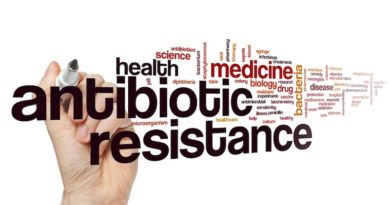
A forward looking public private collaboration to fit with a new vaccine era
History has a habit of accelerating at moments of crisis. The current pandemic is no exception. It has taken us to a crossroads in vaccine science and is a pivotal moment for European decision-makers. Europe has been the home of vaccine innovation and production for decades. In our fast-changing world, we need to think hard about how we work together to strengthen Europe’s leading role in immunisation.
So, what’s new? Let’s start with technology. Vaccines made using mRNA technologies are the most impactful breakthrough of the pandemic. However, far from being an overnight success, the story of mRNA can be traced back decades and is marked by evolution rather than revolution. It is a story of investment and innovation which, catalysed by the crisis, has taken us to the start of a new era of discovery. Beyond COVID-19, the pipeline of new products and platforms shows real promise in a variety of disease areas.
These innovations create opportunities but also demand a fresh approach. At the heart of this is the spirit of partnership that delivered the safe and effective tools we need to exit our current crisis. It would be a mistake to draw a line under these unprecedented collaborations. Rather than thinking of it as a unified response to a sudden threat, we should view it as the blueprint for future successes.
Technologies are not the only things that are changing. There is a growing focus on the role of life-course immunisation and resilient health systems to protect population health. Existing vaccines for adolescents and adults against HPV, influenza, pneumococcal disease and shingles have real untapped potential to support these efforts, while researchers are working towards their next breakthroughs that could deliver new tools.
Vaccines Europe and its member companies are making a strong contribution to this common goal and we stand ready to do more.
By driving scientific advances and engaging with others to translate this into national immunisation programmes, the industry is a vital resource in the EU’s quest to reduce the impact of the infectious diseases we know today – and the ones that may emerge tomorrow.
Collaboration is key
To build on Europe’s strong heritage in vaccine development and production, it is important that we foster a supportive environment. The European Health Union package, along with the European Pharmaceutical Strategy, could underpin a concerted effort to position the EU at the heart of the transformation that is under way.
For Vaccines Europe, collaboration is key. The challenges we are facing as a society are far too complex to tackle in silos: none of us can do this alone. We all need to work together to set objectives and find ways to deliver new innovations, in an early, timely and transparent way. We are calling for EU institutions, such as the European Centre for Disease Prevention & Control (ECDC), to establish regular dialogue with non-governmental actors, including vaccine manufacturers and developers, in an appropriate and structured way.
The vaccine ecosystem is far from simple. Indeed, as biological products, they are considerably more challenging to produce than pharmaceuticals or industrial products.
Regulating vaccines and distributing them through global supplies chains can be equally complicated.
We envisage intensified collaboration between industry and authorities at each step of the journey from the laboratory to the citizen. Outdated views of our industry are a barrier to closer cooperation. Over the past decade, the EFPIA Code of Practice and Disclosure policies have raised standards across the sector, ensuring that company interactions with health professionals, healthcare organisations, and patient organisations respect the most stringent principles of professionalism and responsibility.
What is needed now are permanent ways to engage. We welcome proposals to reinforce the mandates of the ECDC and European Medicines Agency (EMA). Regular, transparent, structured exchanges will all actors – including private ones – should be built into these fresh mandates.
Models for public-private interactions can be found at the Paul Ehrlich Institut in Germany, Public Health England in the UK, the US Centers for Disease Control and Prevention (CDC), and WHO’s Scientific Advisory Group of Experts (SAGE) which advises on immunisation policies. In each case, these reputable public bodies enjoy the benefits of multi-stakeholder input without compromising their independence. Where there’s a will, there’s a way.
Step 1: Vaccine R&D One of the most promising elements of the EU response to the pandemic has been the move to establish the European Health Emergency
Preparedness and Response Authority (HERA). Modelled on the US Biomedical Advanced Research and Development Authority (BARDA), this public-private partnership is designed to equip Europe to prevent and fight emerging infectious diseases. To be successful, HERA must collaborate closely with agencies, academia and industry, providing support for early-stage research through to licensure and manufacture.
Again, there are models of non-competitive public-private partnerships on which to draw. The Innovation Medicines Initiative (IMI) is a strong example of close cooperation for more than a decade, which delivered real results. Its successor, the Innovative Health Initiative (IHI), will take this collaborative model to the next level. This is reflected in the European Commission’s efforts to provide harmonised rules for efficient, flexible and ethical partnerships.
Step 2: Vaccines’ regulatory approval
The record-breaking development and approval of several safe and effective vaccines against COVID-19 was only possible because companies and regulators stood shoulder to shoulder. Without cutting corners or compromising on safety, they streamlined a complex process to ensure trials were designed to answer regulators’ questions and data was reviewed early. The European Medicines Agency’s rolling reviews of vaccines are a case in point, while its active role in informing the public has raised its profile and supported vaccine confidence.
Step 3: Vaccines’ production and supply
Anticipating vaccine demand is essential to ensuring adequate supplies. As seen during the flu vaccination campaigns in autumn/winter 2020, sudden surges in demand can leave citizens unprotected – even where supply has increased year-on-year.
The nature of biological products is such that the tap cannot quickly be turned on further in a matter of weeks or months. Production decisions are made months – and sometimes years – in advance where additional manufacturing capacity must be built to meet demand.
That was a somewhat unique situation, but there are other factors – such as changes to vaccine recommendations – that can stimulate demand. Again, the solution is early and continuous dialogue between manufacturers and health authorities to better anticipate changes. Strengthening Europe’s capacity to manufacture vaccines also brings clear benefits in terms of pandemic preparedness.
Step 4: The launch of a vaccine and inclusion in vaccination programmes
Health Technology Assessment (HTA) bodies and National Immunization Technical Advisory Groups (NITAGs) can play a key role in ensuring citizens have prompt access to vaccines that have been given the green light by regulators. National HTA bodies could step up their work on horizon scanning, early collaboration with vaccine developers, and HTA assessment. Meanwhile, engagement with NITAGs who recommend vaccines for their populations needs to occur early in the process, and information exchanged so that approved innovations can be available to those most in need.
Appropriate policies are needed to improve transparency, collaboration and coordination between decision-makers at national levels to ensure timely access to vaccines.
National efforts are not enough – the EU can add real value here. By achieving greater consensus on standards and methodologies across Europe, more balanced and transparent evaluations can be conducted with greater efficiency and predictability. This will support broader access to new vaccines, helping to reduce inequities between Member States.
Step 5: Monitoring safety and effectiveness
We welcome the recent move by the EMA and ECDC to join forces to strengthen post-marketing monitoring of the safety, effectiveness and impact of COVID-19 vaccines. Vaccines Europe is keen to engage in this initiative. Dialogue between industry experts and EU institutions can ensure efficient use of resources and state-of-the-art know-how.
Together, through the proposed new vaccine monitoring platform, we can devise ways to avoid duplication of effort in conducting phase IV studies that would align with EMA and ECDC requirements.
Engagement between EMA, ECDC and vaccine developers adds real value and synergies for the common good. We are already connecting with the EMA, ECDC and the COVIDRIVE Consortium to identify synergies between requirements set out by the EMA and ECDC.
A lesson learned from the IMI Drive project is that it is best to have all parties at the table. That project, which included 17 public and private partners and was supported by Member States, aimed to streamline post-marketing influenza vaccine effectiveness studies. Although the governance model was designed to safeguard the integrity of this work, and an independent scientific committee was established, the ECDC ultimately decided not to collaborate. This was a missed opportunity to ensure synergies and reduce duplication.
Conclusions
Vaccines are complex biological products delivering unique value in health and that are in no way comparable to other pharmaceuticals. They evolve across their lifecycle within a complex ecosystem, composed of multiple interconnected components and involving a community of public and private stakeholders that interact with one another and with the environment.
Close collaboration is key to ensure the ecosystem balance and Europe needs robust mechanisms for public-private engagement on vaccines. The fruitful partnerships that were the key to tackling the pandemic should be a role model for the future.
Not doing so would leave barriers to our ability to deliver value to citizens and patients.
The vaccine industry stands ready to build successful and sustainable collaborations for the benefit of public health.




